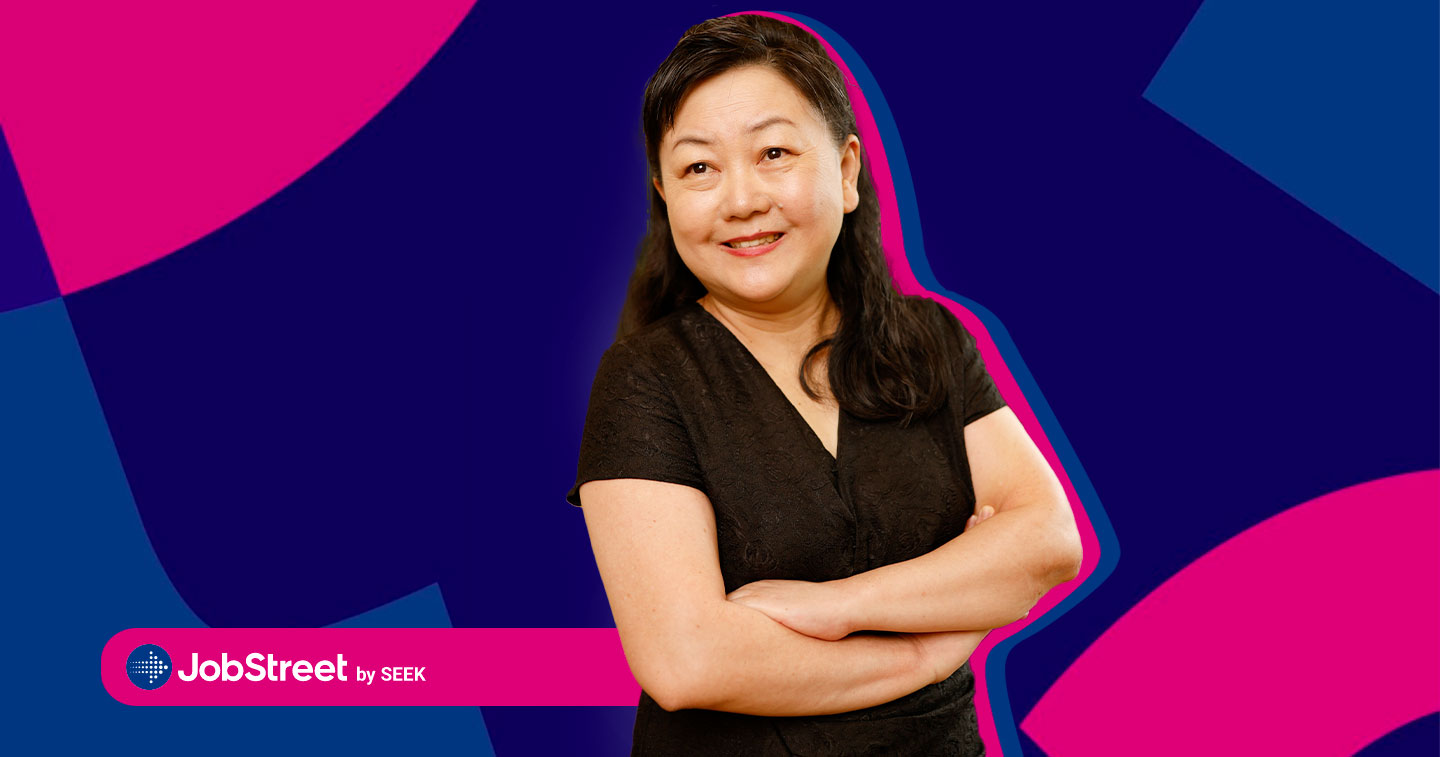MANILA, PHILIPPINES — From digital transitions to revamped work set-ups, everything that encompasses workplace culture has changed, and one significant development to note in modern-day professional environments is the dissolution of gender roles.

adobo Magazine sat down with JobStreet Singapore’s Managing Director, Chew Siew Mee, to get to know how she evolved throughout her career — and with it, the evolution of how people perceive genders not just in the workplace but in society at large.
Siew Mee started working for the job recruitment platform JobStreet back in 1999, starting off as a key account manager and climbing her way up to the role of country manager. Over the past 23 years, she has witnessed many changes and adversities and relied on her adaptability and positive forward-facing mindset to overcome challenges.
You’ve been working at JobStreet for an incredible 23 years. What are some of the most significant changes you’ve seen in the workplace for women?
Yes, indeed! I’ve been with JobStreet since 1999. I started out as a key account manager which gave me many opportunities to interact with customers. This set the foundation for the rest of my career. My roles, duties, and responsibilities gradually expanded as I continued my journey with JobStreet, where I am now the managing director of JobStreet Singapore.
Through the years, I have been lucky to receive support from my peers and supervisors, who guided me in my career growth and helped me to be where I am today. It is also comforting to know that I joined JobStreet, a company that championed diversity and inclusion ahead of the times.
Being heavily involved in field sales and customer interface, which gave me the most frontline exposure, I noticed that the industry was already quite female-dominated. This is unsurprising for a time like 20 years ago when jobs and industries were segregated by “male and female” jobs. For example, client-facing or customer servicing jobs were generally seen as jobs for women, while banking, finance and engineering jobs were considered jobs for men.
Although there are still remnants of stereotypical views toward certain jobs and industries, it is heartening to see that there are positive shifts in the job landscape today. We are seeing more convergence between the genders in the workplace and are also progressively observing more policies put in place to ensure that equal opportunities are available for both women and men.
The fight for equality at the workplace remains. Especially for women, we are constantly trying to break boundaries and prove that women can also take on “male-dominated” roles and excel in them.

What are some of the gender biases you’ve personally experienced or witnessed in your career, and how did you overcome or address them? Do any moments, in particular, stand out to you?
In the employment ecosystem, the boardroom inequality is evident. Today, the ratio of females to males remains small at the board level, where females only make up approximately 10-20% of the members. In terms of the stereotype in the ecosystem, a great number of people think that females are more likely to need time away from work as they have to take on caregiving duties. So how does the working mother navigate through this journey?
As a career woman, often the perception is that women are unable to be fully dedicated to their work because of commitments in the household. Men and women are therefore not viewed as equals in the workplace, even if they are able to produce the same quality of work. From my experiences, there are two ways that I think women can be supported in their careers.
Firstly, I am thankful to have supportive family members who have helped me to progress and excel at work. When I have tight projects to work on, I know that I am fully supported by my husband who will care for the family needs and the children while I direct my full attention to work. I also have clear communication with my son, explaining to him that I will need the space to work, which he understands. In the same way, when my husband also has work responsibilities to fulfill, I understand his time and attention being put elsewhere. This mutual understanding is important to know the kind of support your partner needs and hence, I am grateful to have an accommodating family. Family bonding activities such as vacation times are discussed in advance to accommodate everyone’s responsibilities and schedules like my husband’s and my work, as well as my son’s school.
Secondly, companies need to also be built on this same mutual support and understanding. Men and women alike should be supported by their companies, both in their career growth but also in their family needs when necessary. As a society, I personally think that this is what we should strive to achieve. If men and women are to be seen as equals, then their commitment to their families should be seen as important as their commitment to their work — and this value must be driven by companies first.
How can companies actively combat gender norms and biases in the workplace? Can you share some case studies involving policies implemented at JobStreet or in the industry at large that you’ve seen effectively address this problem?
Many people in the community today still regard that women primarily do caregiving work and will face greater challenges to balance work and family. For this matter, change must first happen from the individual. Women must have the courage to take the first step and take on roles that may seem beyond them. I observed that some women have a lot of self-constraint, placed upon them by both society and themselves. They are too skeptical about work, having doubts and reservations which prevent them from moving forward.
I strongly encourage women who want to move forward to find their passion and take up the challenge of navigating the industry. If you think you can do it, why not just apply for the role, even if it is a senior-level role?
On the other hand, society, employers, and employees need to improve the support they give to women in the workplace. Based on my observation, the most effective ecosystem is to balance both men and women as they come with different strengths, personalities, and characters. When you put them together, you will have a more diverse view.

From my experience, Singapore is a candidate-short place, with a talent crunch occurring in the job market at this moment. Companies must be agile and flexible, and one of the ways they can achieve this is by adapting and turning to new candidate pools. Companies can tap on back-to-work women who have taken a career break, providing them with training and allowing them to adjust to the new world. Job sharing and part-time work are all good options for back-to-work mothers who require specific hours to balance both caregiving and work. By utilizing diverse ways of managing challenges, both companies and candidates can win together.
Over at JobStreet Singapore, we have put together programs to achieve a diverse workforce because we believe that the best ideas come from a good mix of team members with different experiences and backgrounds.
In your experience, what are some of the first or most common barriers to implementing progressive or new policies promoting diversity, equity, and inclusion?
I think one of the biggest challenges is that some employers may not have access to insight that can shed light on the opportunities and challenges faced in the workplace. Therefore, they may not have the necessary infrastructure and policies in place to promote diversity in the workplace.
Over at JobStreet, many initiatives are in place to promote diversity such as maternity leave, childcare leave, study leave, examination leave, and flexi-personal leave to support our employees in balancing work and family.
In the JobStreet Singapore office, the workforce consists of 60% male and 40% female. And within the leadership team, women make up 40%.
How can employers open the conversation on gender equality and DE&I (Diversity, Equity, and Inclusion) in general? Can you also share ways where employees can contribute to this conversation in a more meaningful or impactful way?

With access to insights by JobStreet, employers can leverage them to shape the conversations within the company and form an inclusive hiring approach.
These are some practices companies can adopt in prioritizing DE&I and gender equality:
- Provide more flexi-working models to retain and better attract women talents.
- Provide upskill and reskill opportunities for career mobility.
- Adopt a multi-generational hiring approach.
Would you like to share some words of advice to women in the workplace who are currently dealing with gender biases in their workspaces?
My advice to women is to be open-minded and open to change. Be daring enough to lead the change and take on challenges and have the right frame of thinking, mindset, and attitude.
As long as you believe you can do it, you can influence others to believe that you are capable of achieving something greater as well.









